To celebrate the arrival of Nomos Glashütte’s brand-new automatic movement, the Saxon brand introduces its largest collection ever at one time: the Neomatik.
But before we get into the specifics of the ten individual watches in the Neomatik line, let’s first explore the Caliber DUW 3001 movement that powers them, which is Nomos Glashütte’s second automatic mechanism in its 25-year history.
Caliber DUW 3001 is the Nomos Glashütte movement of the next generation. It was designed and built specifically to allow the brand’s timepieces to retain the character that they have become so famous for: svelte elegance.
But not only that, the new caliber also had to be as accurate as a chronometer (although Nomos Glashütte timepieces are not chronometer-certified so as to keep costs down) and it had to be so efficient in large-scale production that it would not substantially raise the watches’ prices, which are legendarily fair.
Coming in at 3.2 mm high, Caliber DUW 3001 is only 0.3 mm higher than the standard hand-wound Caliber Alpha that ticks in the classic Tangente model – an evergreen that has been in the collection since 1990. And it is 0.9 mm flatter than Nomos’ other automatic movement, Caliber Epsilon, which was introduced in 2004 and powers the Tangomat.

Nomos Glashütte’s automatic Caliber DUW 3001, only 3.2 mm in height, next to a small pile of ‘stamps’
Nonetheless, Caliber DUW 3001 boasts a diameter of 28.8 mm, a power reserve of 42 hours, and all of the Glashütte-typical elements you’d expect to find in a movement fully originating in the historic German watch Mecca: a three-quarter plate, heat-blued screws, rhodium plating with Glashütte ribbing (the Glashütte version of côtes de Genève), sunburst decoration on the wheels, and Nomos’ own perlage, which was developed directly after the fall of the Berlin Wall.
Perlage might sound like a given today, but it actually constitutes a real feat as the Nomos startup team in 1990 couldn’t exactly march into a Swiss factory and ask to be shown how to apply perlage to a movement.
Needless to say, perlage wasn’t necessarily part of the 50 years of industrial-style production that took place in Glashütte before German reunification at the Glashütter Uhrenbetrieb (GUB) combine, so the Nomos team did what they’ve always done: they figured it out.
Typical Glashütte
Additionally, the movement fully conceived, developed, manufactured, and assembled in Glashütte contains a few elements typical of Nomos Glashütte such as its very own Swing System regulator (which you can read about in detail in Bravo, Nomos Glashütte! Now The Metro Will Change The Watch Game), the brand’s own extra-secure balance bridge (attached on two sides to maximize flatness and stability), and bi-directional rotor winding for added efficiency.
When the power reserve is full, the rotor no longer winds the mainspring, which minimizes wear and tear. The special component controlling that part of the winding mechanism was developed by Theodor Prenzel, assistant director of the research and development department, and his team. It is called the “Doppelklinkenrad,” a word that could be translated as the double click wheel.
And, though it is not something you’ll ever notice on the outside, it is perhaps interesting to know that the new calculations Prenzel engineered into the movement with the help of the Dresden University of Technology have led to greater efficiency and less friction.
“We only have 5.8 percent efficiency loss due to friction in this movement, which is simply enormous,” managing director Uwe Ahrendt told me in late September in Glashütte. “Around 20 percent would be normal – and is what other automatic movements have. We achieved it by making changes in geometry and positioning in the gear train and by creating our Swing System, all of which also allowed us to design this thinner movement.”
Assembling this new double click wheel is tricky, so Prenzel and team created a tool inspired by an idea from Nomos Glashütte’s head of movement technology Mirko Heyne that uses a vacuum jet to help the process become safer, easier, and quicker. While certain steps in the pre-assembly – such as gear train oiling and regulation – are automated, all of the assembly and fine adjustment is done by hand.
However, because the manufacturing and pre-assembly have been so thoughtfully and cleverly set up, the actual final assembly of Caliber DUW 3001 can be accomplished in about five minutes by an experienced watchmaker at the light and airy Glashütte factory. This is a very important element in terms of servicing and maintenance that contributes to making it easy for the consumer to have his or her watch serviced lifetimes later anywhere in the world.
So what happens to Caliber Epsilon, the first automatic movement by Nomos Glashütte? “It will continue along in the collection in parallel,” Ahrendt answered. “Certain watches in our collection, like the Zürich, need a certain height for their intended design. If we were to make it thinner, the Zürich would lose the original idea that came from [now-deceased designer] Hannes Wettstein.”
Neomatik
This beautiful, efficient, and – yes – innovative movement now makes its debut in the new Neomatik, a line comprising ten different wristwatches, five with light-colored “champagne” dials and five with cyan blue elements against a silver-plated dial.
All ten watches have small neon orange accents. Small to ensure that the collection does not look dated if neon orange drops out of fashion.
Modern Glashütte, that’s what I would call the Neomatik. A sensible, sensibly priced, enduring, efficient, fashionable, and beautiful tribute to where Nomos Glashütte came from and where it is going.
From the outside, the five base watches that make up the new Neomatik line might just look like new versions of the same old watch. And that is why I began with the movement: to stress the importance of what is happening on the inside.
You can rest assured, though, that smaller changes also occurred on the outside, to case and dial elements, providing more of a true facelift to these models than just revamping the colors.
“On one hand, we are perhaps a bit ‘captive’ where our design is concerned,” Ahrendt continued. “But on the other hand, it is also our biggest opportunity. With the new Neomatik, especially the ‘champagne’ set – I guess I was a little afraid it wouldn’t seem as aesthetic [as our other models], but it is really something entirely different, fresh, and new. And it is still Nomos.”
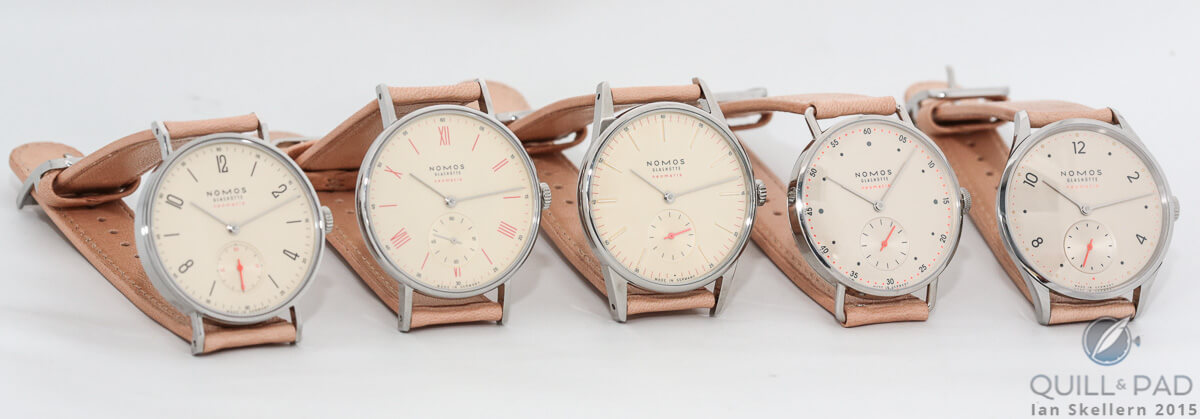
The new Nomos Glashütte Neomatik Champagner line (l to r): Tangente, Ludwig, Orion, Metro, and Minimatik (please note that the Minimatik shown here does not have the final dial)
And right he is! The new Tangente, Minimatik, Orion, Metro, and Ludwig Neomatik Champagner (German for “champagne”) timepieces are nothing short of sensationally designed with their light-colored visuals and light-hearted attitudes.
The splash of neon orange works so perfectly with the champagne-colored dials and hand-stitched natural cowhide straps that one might have thought this was the original color scheme of freshly developed timepieces.
If you might be worried about how the strap ages, let me take that fear from you. I asked that same question, and was sent to see Heike Ahrendt, product manager at Nomos Glashütte, who has been wearing one of these straps for a couple of years now. The light-colored leather takes on a special patina from the skin, and gets a tad darker, but it doesn’t look dirty or otherwise unattractive.
As for the black straps made of beautiful Shell Cordovan on the darker set of watches, I can personally attest that those are the longest-lasting straps I have ever worn. I have one on my personal Tetra, which I bought 15 years ago. It still looks fresh as a daisy and probably won’t need changing for another decade.
All in all, a gorgeous set of incredibly priced and superbly designed wristwatches that are well worth more than a second glance. Your wallet will thank you.
For more information, please visit www.nomos-glashuette.com.
Quick Facts Tangente Neomatik & Neomatik Champagner
Case: stainless steel, 35 x 6.9 mm
Movement: automatic Caliber DUW 3001, 28.8 x 3.2 mm
Functions: hours, minutes, small seconds
Price Neomatik: €2,580 / $3,460 / £2,200 / CHF 2,580
Price Neomatik Champagner: €2,660 / $3,580 / £2,260 / CHF 2,660
Straps: hand-stitched natural cowhide (champagne edition) and black Horween Shell Cordovan
Quick Facts Minimatik & Minimatik Champagner
Case: stainless steel, 35.5 x 8.86 mm
Movement: automatic Caliber DUW 3001, 28.8 x 3.2 mm
Functions: hours, minutes, small seconds
Price Minimatik: €2,770 / $3,680 / £2,360 / CHF 2,770
Price Minimatik Champagner: €2,850 / $3,800 / £2,420 / CHF 2,850
Straps: hand-stitched natural cowhide (champagne edition) and black Horween Shell Cordovan
Quick Facts Metro Neomatik & Metro Neomatik Champagner
Case: stainless steel, 35 x 8.06 mm
Movement: automatic Caliber DUW 3001, 28.8 x 3.2 mm
Functions: hours, minutes, small seconds
Price Metro Neomatik: €2,880 / $3,840 / £2,420 / CHF 2,880
Price Metro Neomatik Champagner: €2,960 / $3,800 / £2,480 / CHF 2,960
Straps: hand-stitched natural cowhide (champagne edition) and black Horween Shell Cordovan
Quick Facts Ludwig Neomatik & Ludwig Neomatik Champagner
Case: stainless steel, 36 x 6.95 mm
Movement: automatic Caliber DUW 3001, 28.8 x 3.2 mm
Functions: hours, minutes, small seconds
Price Ludwig Neomatik: €2,520 / $3,360 / £2,120 / CHF 2,520
Price Ludwig Neomatik Champagner: €2,600 / $3,480 / £2,180 / CHF 2,600
Straps: hand-stitched natural cowhide (champagne edition) and black Horween Shell Cordovan
Quick Facts Orion Neomatik & Orion Neomatik Champagner
Case: stainless steel, 36 x 8.45 mm
Movement: automatic Caliber DUW 3001, 28.8 x 3.2 mm
Functions: hours, minutes, small seconds
Price Orion Neomatik: €2,680 / $3,580 / £2,260 / CHF 2,680
Price Orion Neomatik Champagner: €2,760 / $3,700 / £2,320 / CHF 2,760
Straps: hand-stitched natural cowhide (champagne edition) and black Horween Shell Cordovan
Trackbacks & Pingbacks
-
[…] to “neomatik” updates, this Metro’s stainless steel case with an enlarged diameter of 38.5 mm is very slim. […]
-
[…] Two years ago, the latest in-house self-winding movement, Caliber DUW 3001, took center stage in the new neomatik series (see more in Nomos Glashütte Neomatik: A Sensibly Priced, Efficient, Fashionable, And Mechanically Sound Tribute…). […]
-
[…] in Switzerland. The topic of this conversation, which occurred before the introduction of the Nomos Glashütte Neomatik, was: how can Nomos Glashütte make a watch with a manufacture movement for about €1,000 when – […]
-
[…] Best Design: Nomos Metro Neomatik Champagner. Further reading: Nomos Glashütte Neomatik: A Sensibly Priced, Efficient, Fashionable, And Mechanically Sound Tribute…. […]
-
[…] Baselworld 2016, Nomos Glashütte introduces the caliber in the familiar Tetra case as part of the Neomatik […]
-
[…] in Switzerland. The topic of this conversation, which occurred before the introduction of the Nomos Glashütte Neomatik, was: how can Nomos Glashütte make a watch with a manufacture movement for about €1,000 when – […]
Leave a Reply
Want to join the discussion?Feel free to contribute!






















































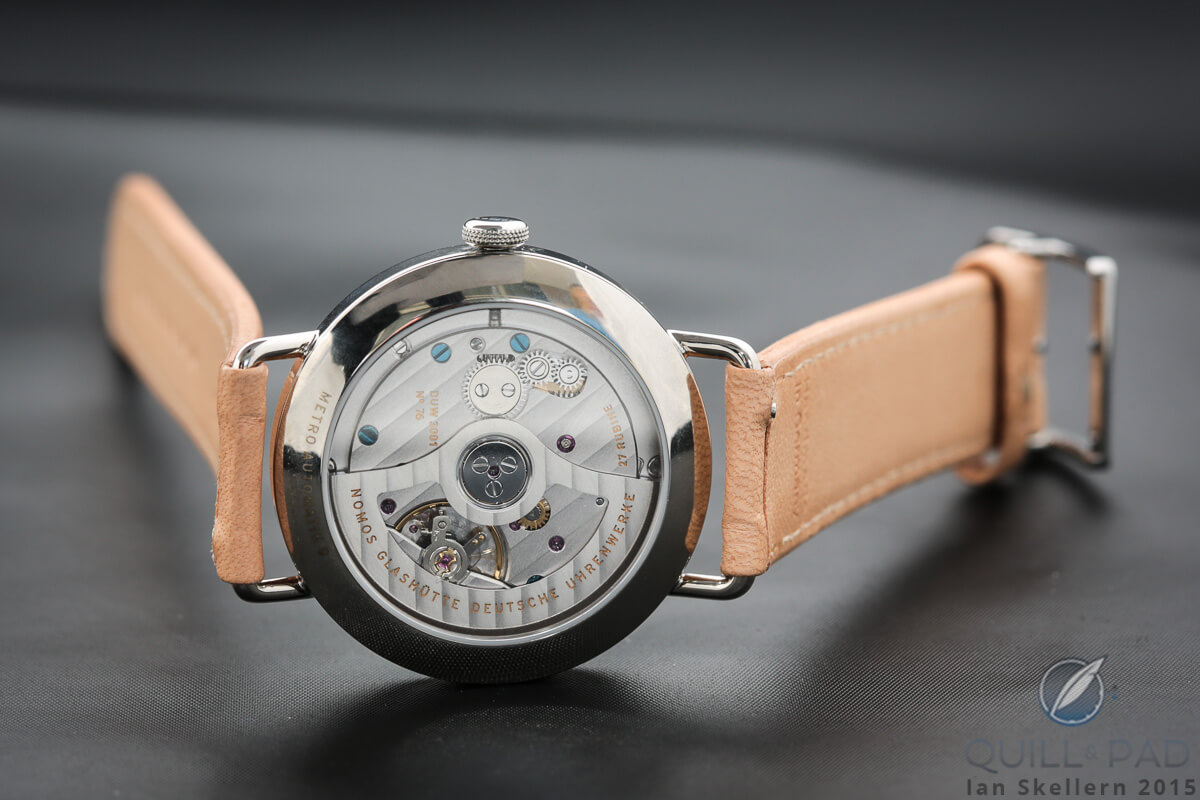
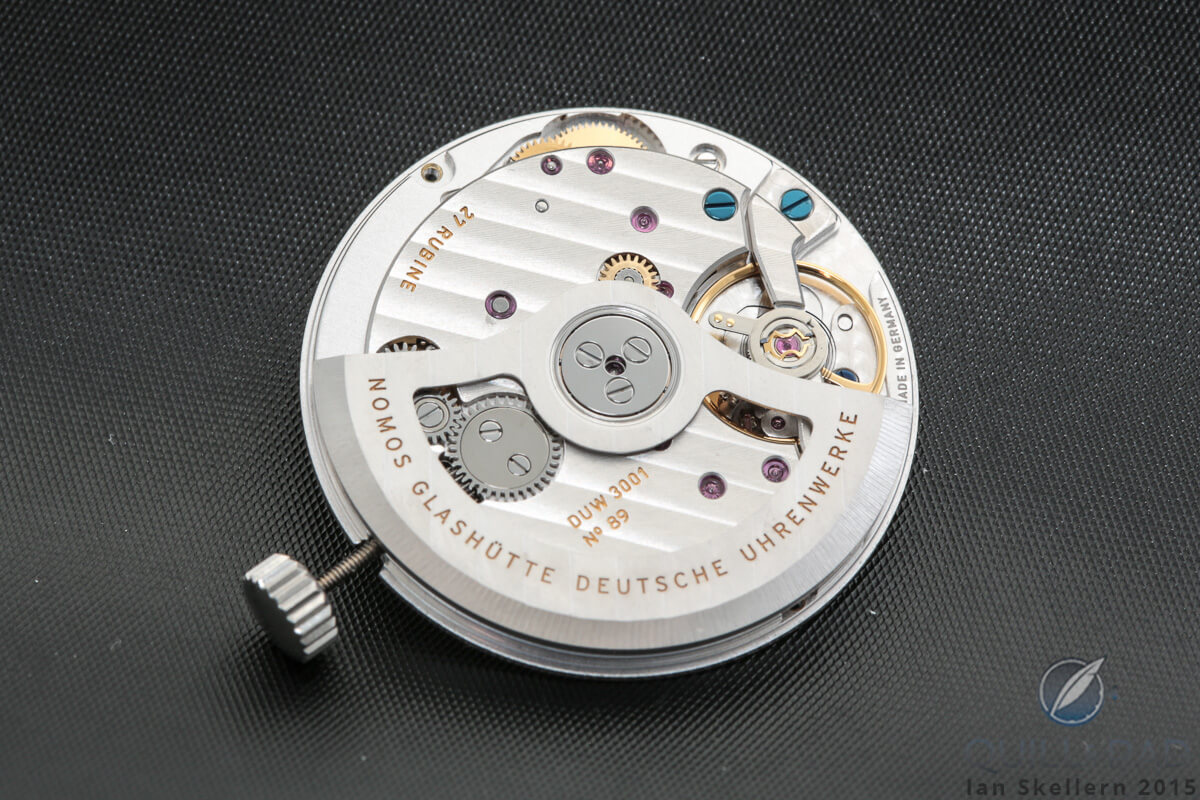
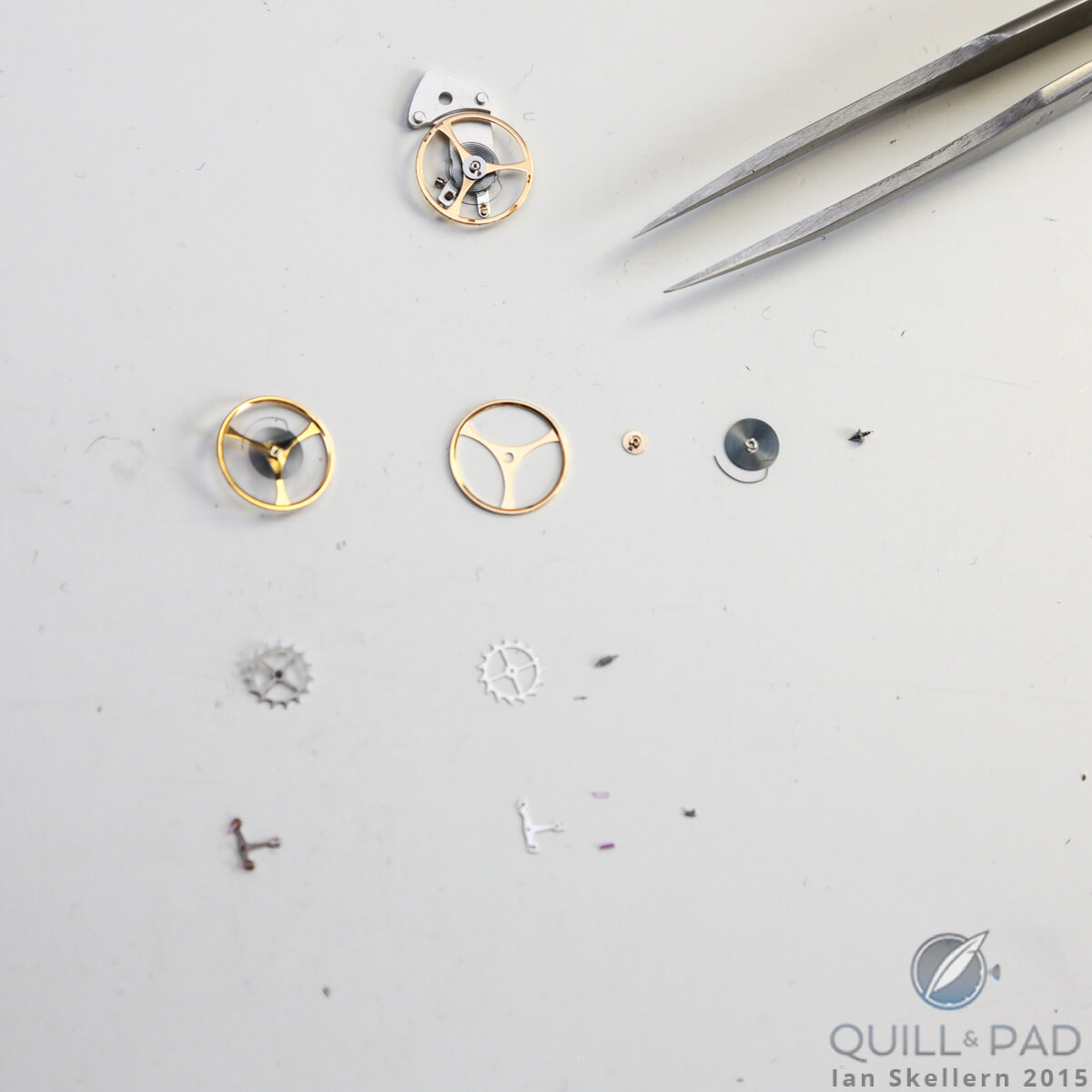
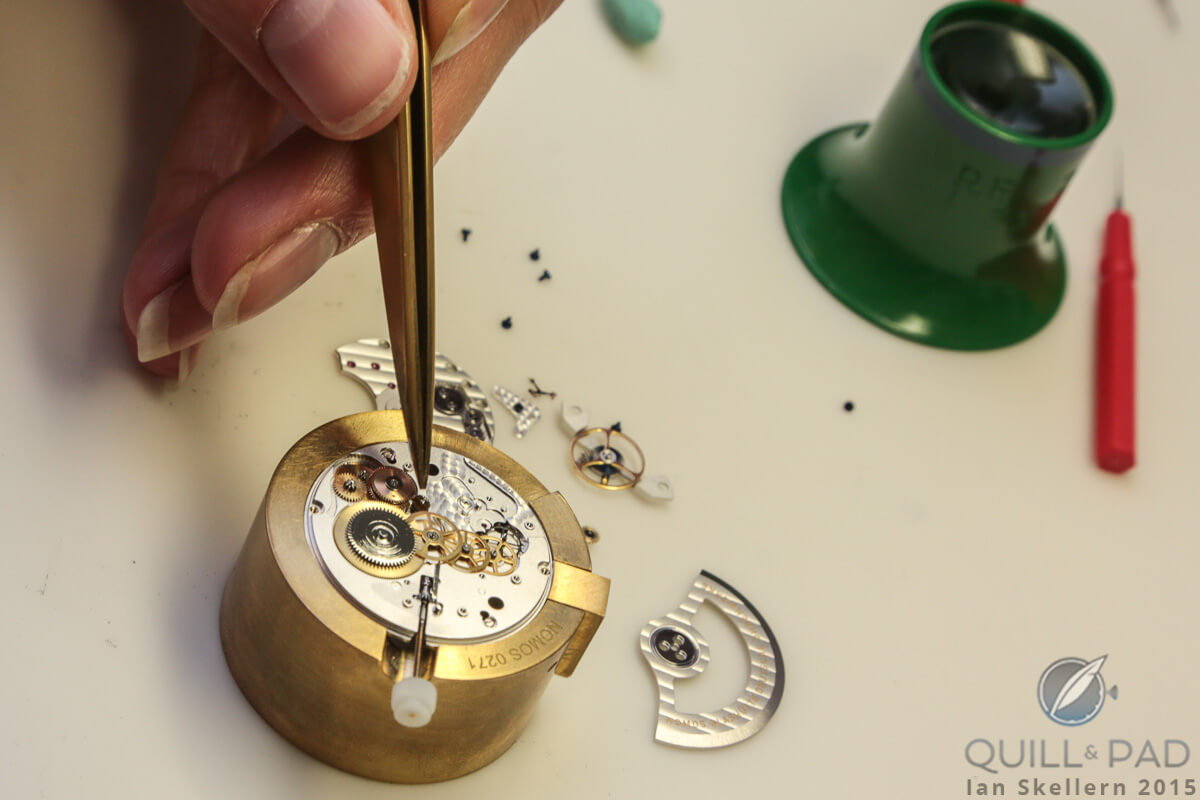
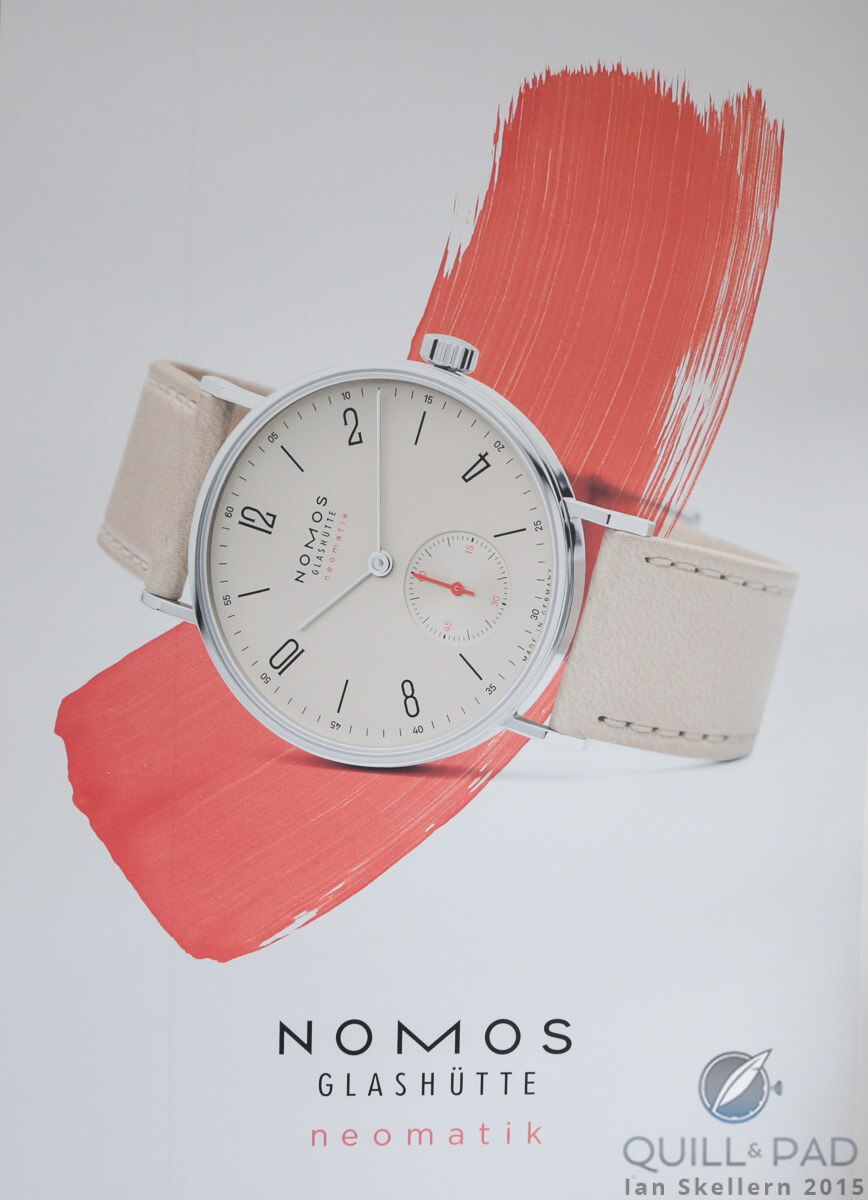
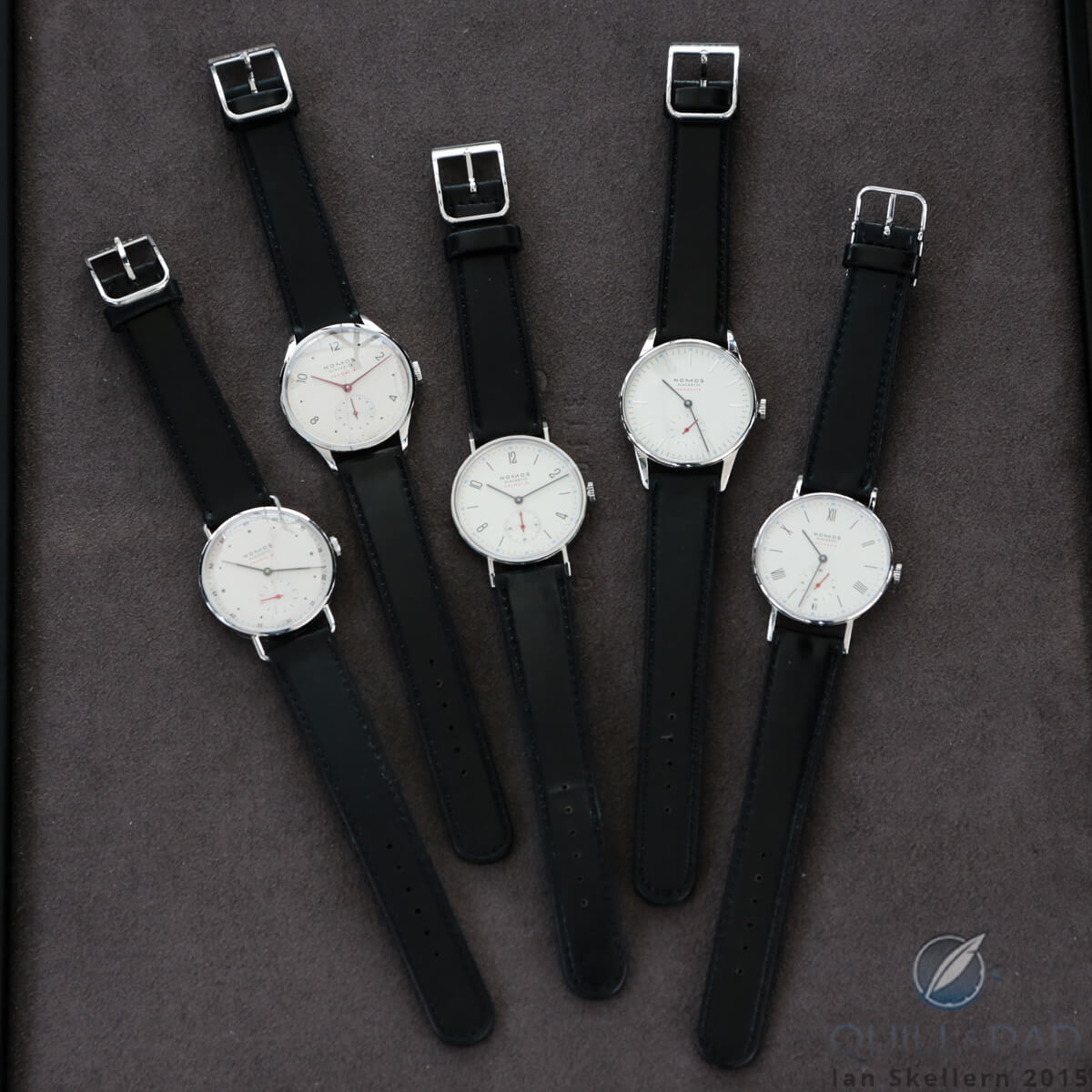
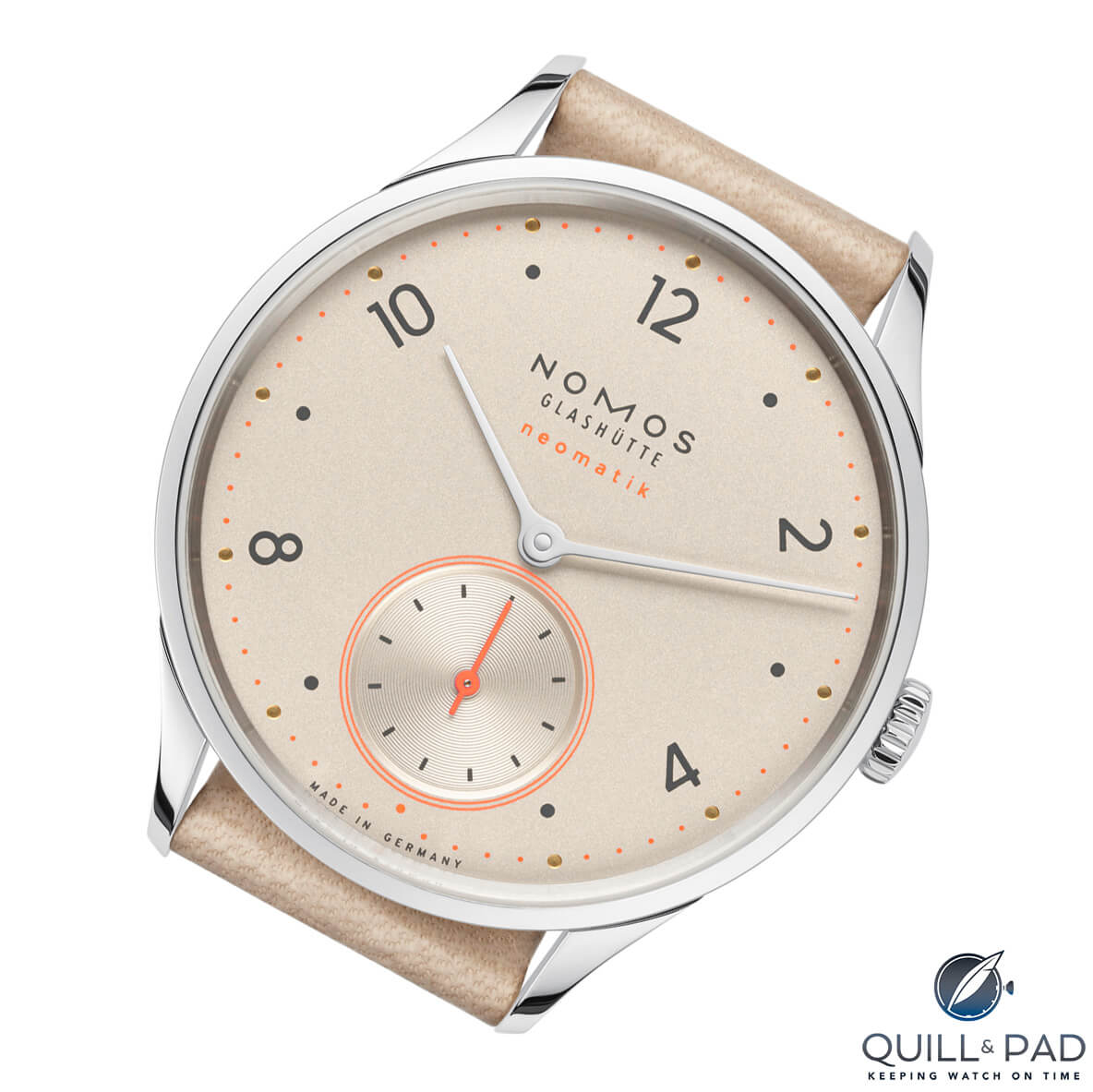
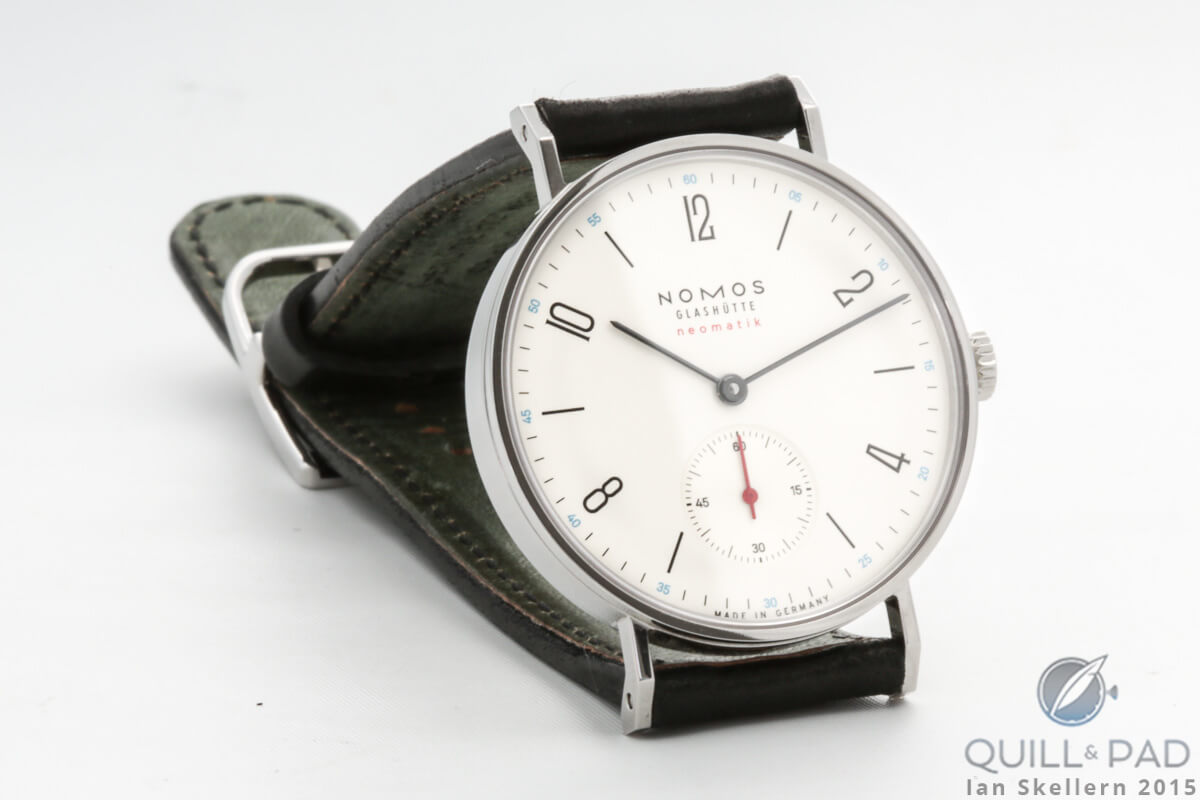
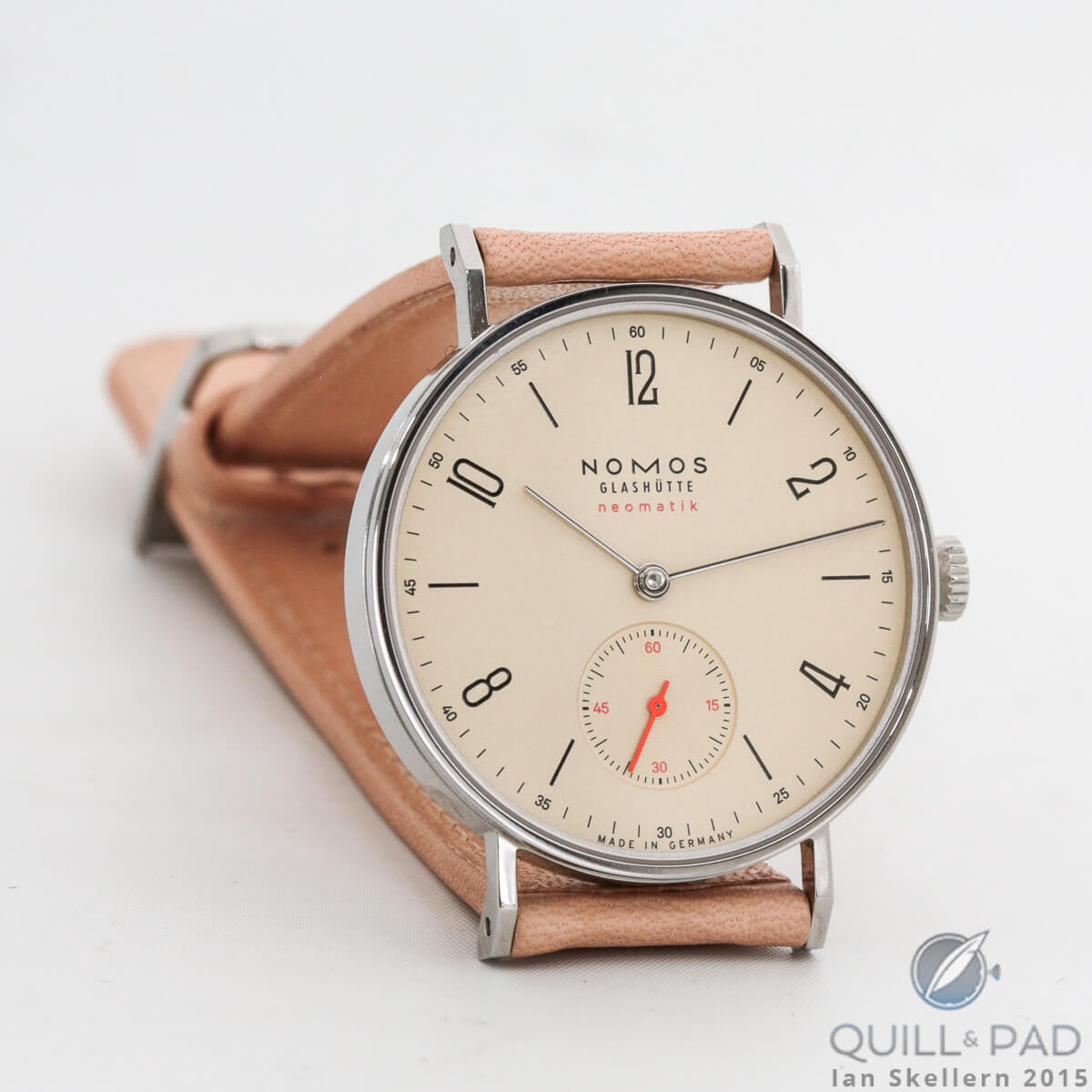

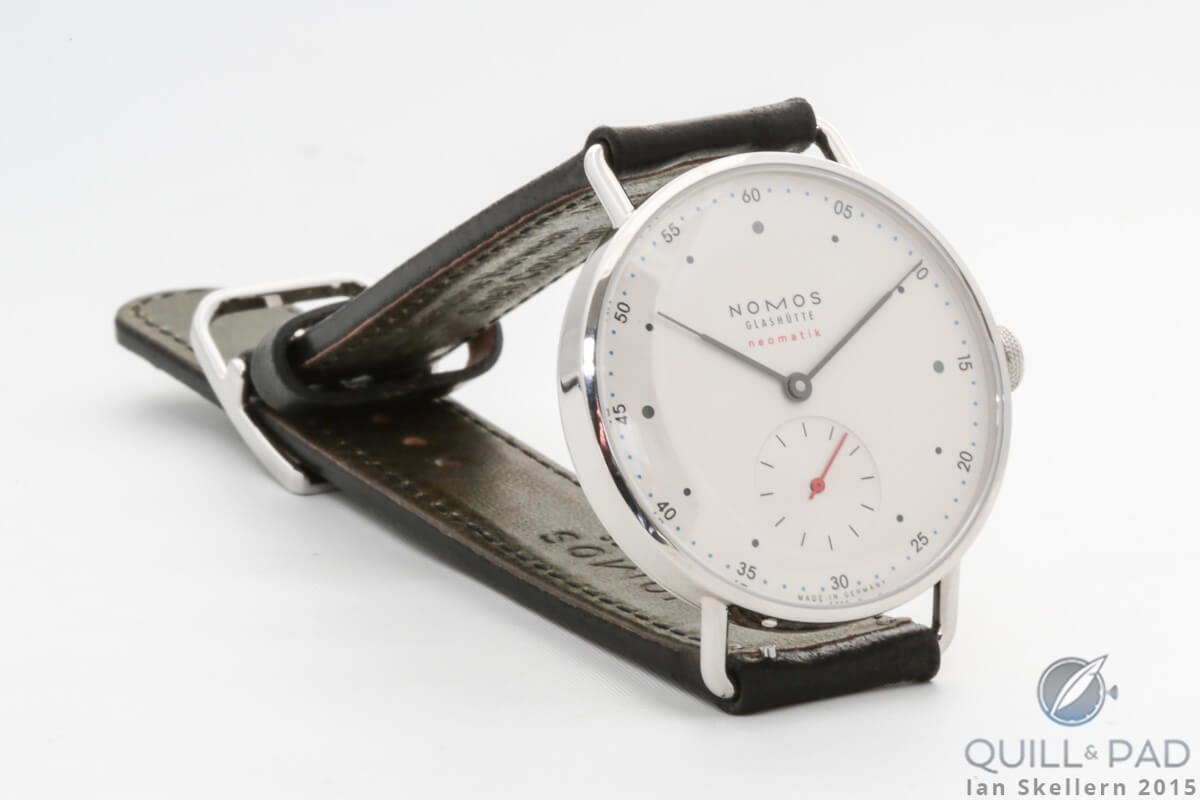
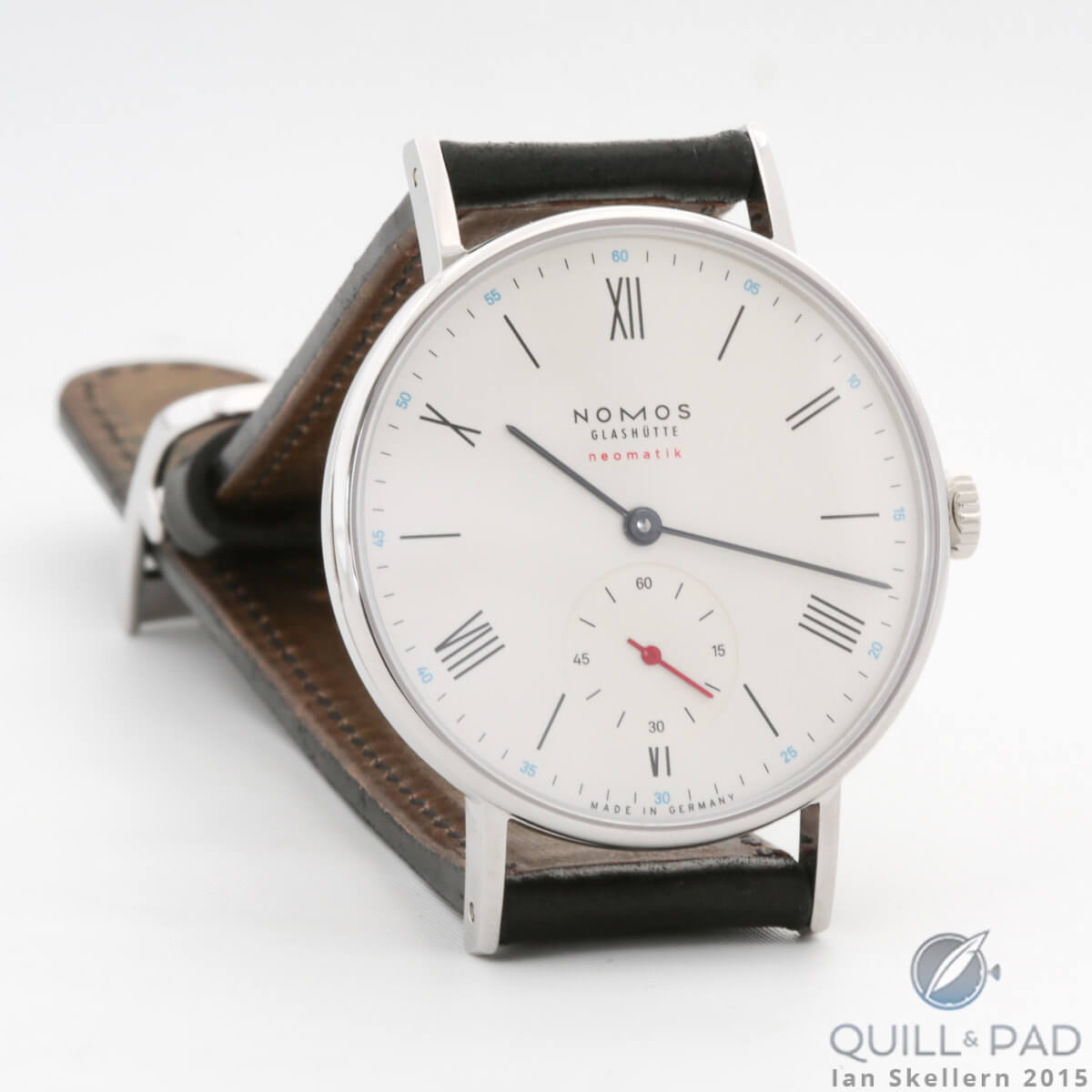
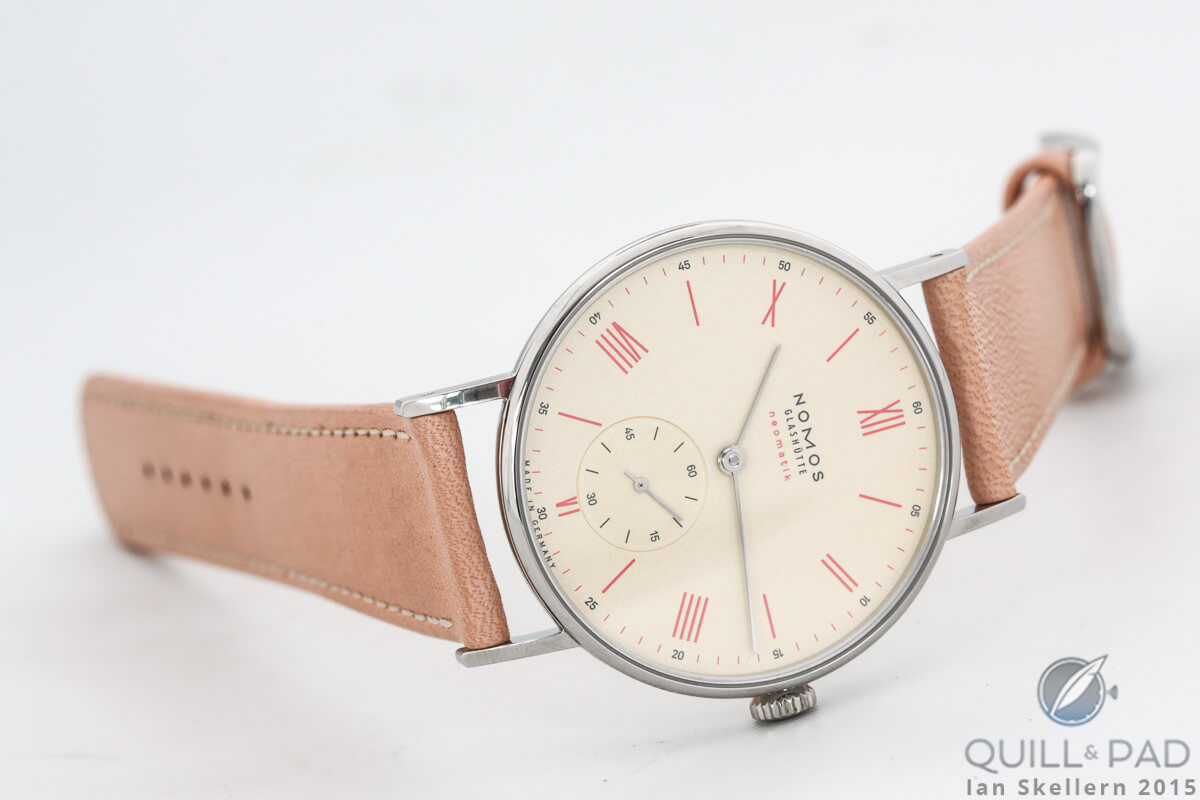

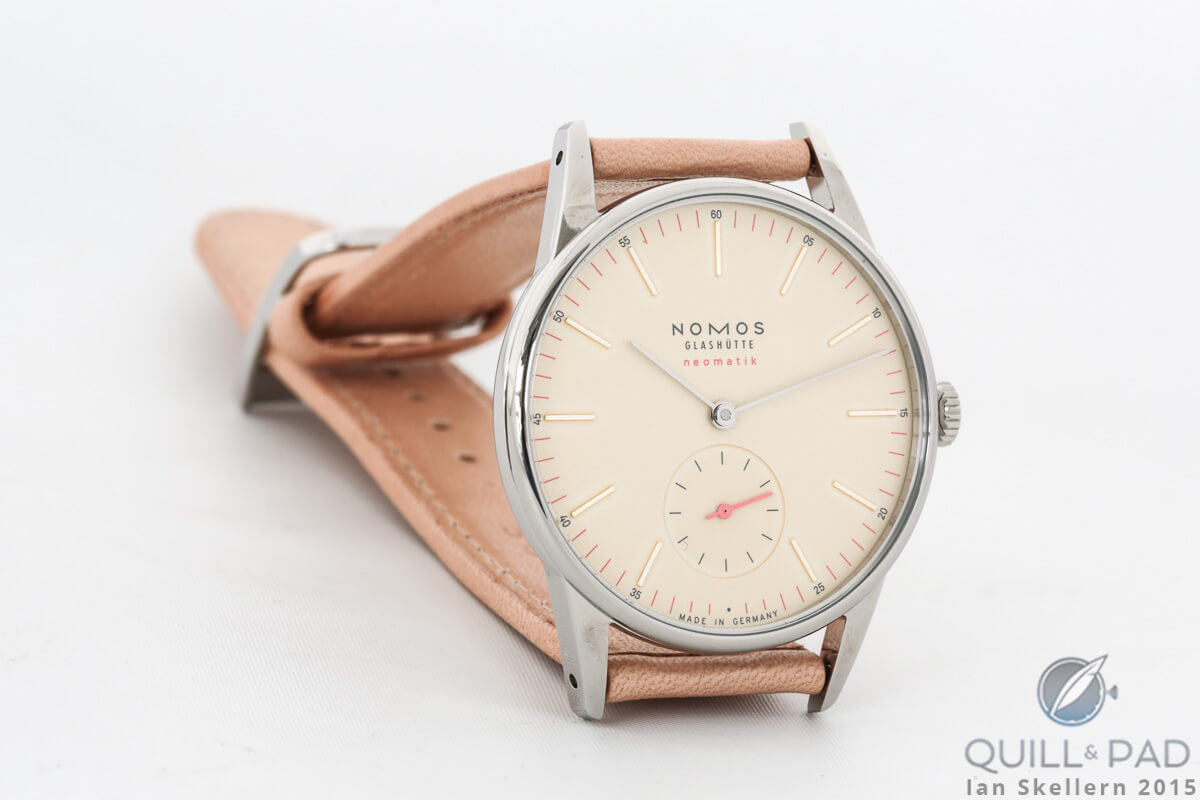
too late!
What do you mean by too late?
They sold out within an hour i believe. i was lucky to get a Ludwig Neomatik Champagner!
Ah! Wow, that’s amazing news. Thanks for sharing!
What precision do the DUW calibers are able to keep with the Nomos Swing Escapement? Is it also amagnetic and up to which flux density?
What is the service interval of the DUW calibers?
Thanks for reading, Dimitris. The precision is within C.O.S.C. requirements, and yes it is currently amagnetic thanks to a LIGA escape wheel, which is due to be changed out for steel within a year. The service interval is the same as for any mechanical watch: 4-5 years. I have no idea what you mean by flux density. Can you please phrase this a different way?
Thanks for the quick reply. Flux Density is the strength so to say in the magnetic field.
Most modern mechanical watches do 0.1 μΤ or 1000Gauss other like Omegas Aqua Terra up to 15000 Gauss.
Ah, thank you for the clarification. This is a bit of an odd question to pose for a non-sports watch, though. If a watch is extra-outfitted this way, it not only adds to its selling points, but usually also at least a bit to the price. The Nomos is in the “normal” anti-magnetic range. Watches like the Omega you mention, which have extra protection against magnetic fields, are usually made by the likes of Sinn and Ball.